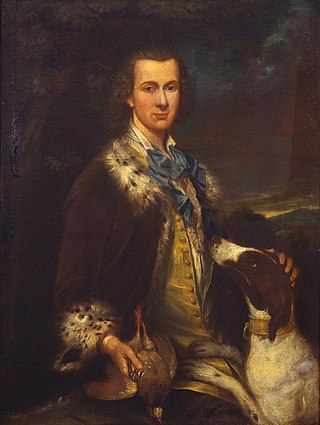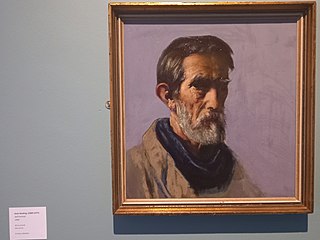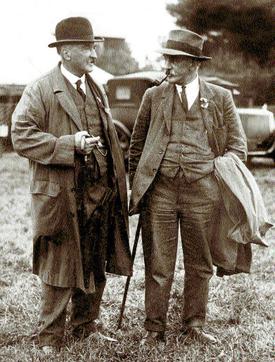Related Research Articles

Theobald Mathew was an Irish Catholic priest and teetotalist reformer, popularly known as Father Mathew. He was born at Thomastown, near Golden, County Tipperary, on 10 October 1790, to James Mathew and his wife Anne, daughter of George Whyte, of Cappaghwhyte. Of the family of the Earls Landaff, he was a kinsman of the clergyman Arnold Mathew.

Thomas Dongan, 2nd Earl of Limerick, was a member of the Irish Parliament, Royalist military officer during the English Civil War, and Governor of the Province of New York. He is noted for having called the first representative legislature in New York, and for granting the province's Charter of Liberties.

Earl of Limerick is a title that has been created twice in the Peerage of Ireland, associated first with the Dongan family, then with the Pery family.

William Smith O'Brien was an Irish nationalist Member of Parliament (MP) and a leader of the Young Ireland movement. He also encouraged the use of the Irish language. He was convicted of sedition for his part in the Young Irelander "Famine Rebellion" of 1848 but his sentence of death was commuted to deportation to Van Diemen's Land. In 1854, he was released on the condition of exile from Ireland, and he lived in Brussels for two years. In 1856 Smith O'Brien was pardoned and returned to Ireland, but he was never active again in politics.

Gerald Griffin was an Irish-born novelist, poet and playwright. His novel The Collegians was the basis of Dion Boucicault's play The Colleen Bawn. Feeling he was "wasting his time" writing fiction, he joined the Christian Brothers, a Catholic religious congregation founded by Edmund Ignatius Rice to teach the children of the poor.
The architecture of Ireland is one of the most visible features in the Irish countryside – with remains from all eras since the Stone Age abounding. Ireland is famous for its ruined and intact Norman and Anglo-Irish castles, small whitewashed thatched cottages and Georgian urban buildings. What are unaccountably somewhat less famous are the still complete Palladian and Rococo country houses which can be favourably compared to anything similar in northern Europe, and the country's many Gothic and neo-Gothic cathedrals and buildings.

Seán Keating was an Irish romantic-realist painter who painted some iconic images of the Irish War of Independence and of the early industrialization of Ireland. He spent two weeks or so each year during the late summer on the Aran Islands and his many portraits of island people depicted them as rugged heroic figures. However, he ceased to visit the Aran Islands in 1965.
Philip Charles Hardwick was an English architect.

Thomas William Westropp Bennett was an Irish politician, magistrate and public figure in Irish agriculture.
Events from the year 1844 in Ireland.
Andrew Devane was an Irish architect, born in Limerick. He studied architecture at University College Dublin under Rudolf Maximilian Butler where he graduated in 1941. In 1946 he was awarded the Taliesin Fellowship and he left Ireland for the United States to study under Frank Lloyd Wright until 1948. In 1948 he re-joined Paddy Robinson and Cyril Keefe of the architectural practice of Robinson & Keefe as a partner.
James Pain was an English architect. Born into a family of English architects, his grandfather was William Pain, his father James Pain and his brother George Richard Pain. James Pain served as an apprentice to the architect John Nash of London. James and George Richard were commissioned by the Board of First Fruits to design churches and glebe houses in Ireland. In 1833, James Pain became one of the four principal architects of the Board of Ecclesiastical Commissioners. He settled in Limerick, Ireland. Many of his designs were produced in collaboration with his brother George Richard who practised in Cork.

Colonel Thomas de Burgh, always named in his lifetime as Thomas Burgh, was an Anglo-Irish military engineer, architect, and Member of the Parliament of Ireland who served as Surveyor General of Ireland (1700–1730) and designed a number of the large public buildings of Dublin including the old Custom House (1704–6), Trinity College Library (1712–33), Dr Steevens' Hospital (1719), the Linen Hall (1722), and the Royal Barracks.
Joseph Fogerty, CE, FRIBA, was an Irish civil engineer, architect, and novelist active in mid-to-late-nineteenth-century Limerick, London, and Vienna.

John Fogerty was an Irish millwright, architect, builder, and civil engineer, active in early to mid-19th-century Limerick.He was the brother of Joseph Fogerty Sr. and the father of engineer and novelist Joseph Fogerty of London, architect William Fogerty of Dublin, and grandfather of architect John Frederick Fogerty. He retired as an architect sometime between 1870 and 1879.
John Frederick Fogerty (1863–1938), was an Irish architect and engineer active late 19th-century Limerick, London, Shropshire, Bournemouth, Pretoria, and Zambia. Born in Limerick, he was the son of architect William Fogerty, grandson of architect and engineer John Fogerty (engineer), and nephew of engineer and novelist Joseph Fogerty. He earned a bachelor's degree in engineering from Queen's College, Cork in 1883, and attended the South Kensington Art School the year later. He was articled to Sir Thomas Drew. In 1889, he established his office at Wellington, Shropshire, and entered into partnership with Reginald George Pinder in Bournemouth in 1893, later amalgamating Pearce & Parnell of Bournemouth in 1902. He emigrated to South Africa in 1914 and enlisted at the outbreak of the First World War, serving time in South Africa, the Isle of Wight, Palestine, and Poona, India. During the interwar period, he worked as an engineer in Pretoria's Public Works Department, before becoming borough surveyor in Lusaka, Zambia, in 1926, where he died in 1938.
Joseph Fogerty Sr. was an Irish builder and architect active in nineteenth-century Limerick. Born in Limerick into a family of builders, he was the father of Robert Fogerty and George J. Fogerty; brother of John Fogerty (engineer), uncle of engineer and novelist Joseph Fogerty of London and architect William Fogerty of Dublin, and great uncle of architect John Frederick Fogerty. He designed and built the Theatre Royal, Limerick, Henry Street. From the 1870s until his death, he was partners with his son Robert in the firm Joseph Fogerty & Son.

The Court of Common Pleas was one of the principal courts of common law in Ireland. It was a mirror image of the equivalent court in England. Common Pleas was one of the four courts of justice which gave the Four Courts in Dublin, which is still in use as a courthouse, its name.
Ulysses Burgh was an Irish Anglican cleric who was Dean of Emly (1685–1692) and Bishop of Ardagh (1692).

Shelley McNamara is an Irish architect and academic. She attended University College Dublin and graduated in 1974 with a Bachelor of Architecture. She founded Grafton Architects with Yvonne Farrell in 1978. Grafton rose to prominence in the early 2010s, specialising in stark, weighty but spacious buildings for higher education. McNamara has taught architecture at University College Dublin since 1976 and at several other universities.